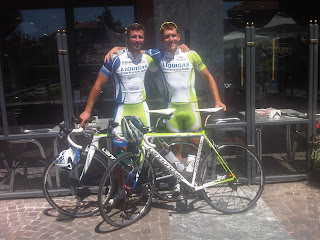Introduction
I’m not totally sure the word “cool” is adequate to describe what Oracle’s giving away. Awesome? Stupendous? Magnificent? Gobsmacking? You decide after you’ve had a read.Is the above mere hyperbole? I think you’ll replace the snark with praise in just a few short minutes.
Did I mention it’s free? Read on…
Upgrades are us
No more beating around the bush on this one – if you are a paid-up customer or partner, Oracle has created an upgrade advisor from 11.1.1.3 to 11.1.2.1. You will have to log into Oracle Support to view this, but trust me it’s worth it.What do I like about it so much?
- I’ve been on upgrades (As everyone who has read this blog knows by now, I am an infrastructure idiot, so I have been involved strictly from an application perspective.) that were not…well planned. If you follow this upgrade advisor, you will have a guide. Oracle’s guide. Think about how that will sound to your boss/IT director/CIO/CFO/VP of Finance. Right, thought so.
- Upgrades are often the province of consultants. Nothing wrong with that as yr. obdnt. srvnt. is one himself. But you, the customer, have to trust that the consultants are doing everything right. Now you have the vendor’s recommendation and can compare and contrast that with what your consulting company offers as an approach. This might lead to interesting conversations. :)
- Consulting companies (if they’re smart) will spend a lot of time going through this and improve their processes. This is A Good Thing.
- There’s big buck process consulting in here, including, in the Plan category alone:
- Learn how to work with Oracle Support
- Project Organization and Governance
- Review Architecture and Implementation Needs
- Review Potential Environment Impact
- Review Product Certifications
- Review Upgrade and Installation Guides
- Consider a Test Strategy
- Consider Training Needs
- Review Impact on Third Party Components and Interfaces
- Design Test Systems
- Constructing a Test System
- Planning for Backups and RDA/OCM Collections
- Patching Strategy for Test and Live System
- List of Milestone Deliverables
- As I wrote, that’s just the Plan section. There’s more, much more on offer.
- What I particularly like about this guide is it doesn’t tell you how to do something specifically (it is not going to write your test strategy for you), but it tells you why you should have a test strategy, and what the test strategy should include, and when it should be deployed in the project. This is Good Stuff.
- Knowledge is power. You know have Knowledge, hence your Power just increased.
- Did I mention it is free?
Conclusion
I know of a customer who is going through an 11.1.1.3 to 11.1.2.1 upgrade right now. I’m sending them the link right after I finish posting this blog. How much more of a recommendation can I give?By the way, if you feel any sense of gratitude or thanks, don’t direct it towards me as I had nothing to do with the writing of this Upgrade Advisor. Thank the unsung heroes in Oracle Support.


